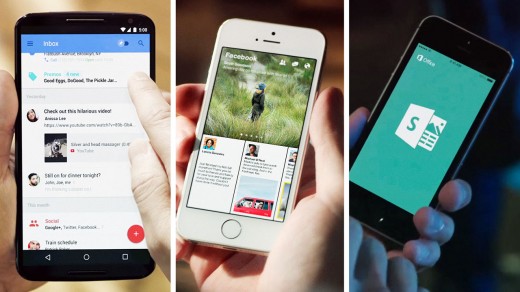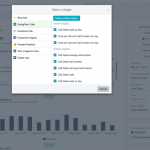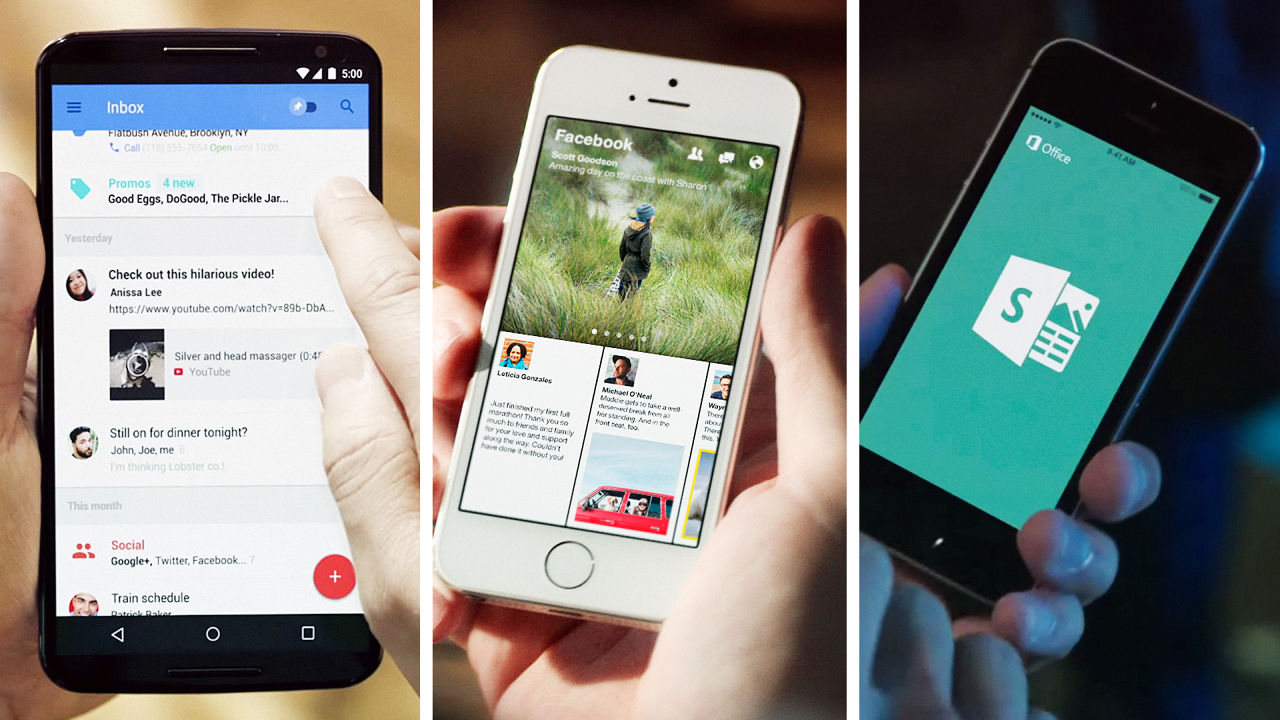Inbox, Paper, And Sway: Why Tech Giants Are all at once Reinventing Their Core Apps
Google, Microsoft, and fb have all launched new takes on old apps this year, and it is not exactly a coincidence.
if you happen to seem throughout the App store opinions for facebook Paper, it does not take long to seek out the ordinary theme.
“So a lot better than the main facebook app,” one person wrote.
“it is light years beforehand of the standard fb app and everyone that can should delete the native app and use this one,” wrote another.
a 3rd consumer was blunt: “facebook will have to strongly imagine making Paper its professional iOS app as a substitute of the grim major app.”
With Paper, fb has effectively rebooted its core information Feed product on the iPhone. despite the fact that Paper is constructed mostly across the comparable pictures and standing updates you get from facebook’s main app, it doesn’t really feel like something that used to be purely retrofitted to the telephone. It emphasizes huge photos and swipe gestures, and allows you to add basic information sections for when you need a break from your mates. it may simply stand in for the main facebook experience, even though it doesn’t have all of the similar features.
fb is not by myself. closing week, Google introduced Inbox, which is built around Gmail however with a distinct approach to displaying and handling messages. instead of showing every e mail in reverse-chronological order, Inbox intelligently sorts messages into groups like “commute” and “Purchases,” and in a nod to Dropbox’s Mailbox, means that you can snooze or pin necessary emails for later.
On October 1, Microsoft revealed Sway, a modern tackle displays with an emphasis on fashion and ease of use. Whereas PowerPoint makes you obsess over every line and transition, Sway does the entire heavy lifting robotically, and it is designed to be just usable on telephones as it’s in a web browser.
whereas I hate to drag the previous “three is a pattern” journalist hat trick, it looks like more than a twist of fate when Google, fb, and Microsoft reinvent core apps in such shut proximity. And while you seem closer on the motivations and objectives of each project, there is greater than just a bit overlap.
cell-First, For actual
the concept companies must prioritize phones and tablets over old-faculty PCs isn’t new, and firms like Google declare to were doing it for years. however what they’re ultimately realizing is that mobile-first approach more than just making a finely polished app for contact monitors. user behavior isn’t the identical on phones as it is on PCs, which means that the app itself have to be essentially totally different.
Microsoft’s Sway, as an example, throws out most of the tough tools that PowerPoint deals, and as an alternative makes a speciality of letting individuals throw issues together quick, even on a smartphone. it is form of like using templates in PowerPoint, with the exception of that every slide can adapt to the amount of photos and textual content you place in it, and will layout itself robotically for any screen dimension.
“We concept there’s a possibility now to make an actual, robust content advent tool that’s basically a mobile-most effective device for these people who best have mobile phones,” says Chris Pratley, Sway’s lead engineer.
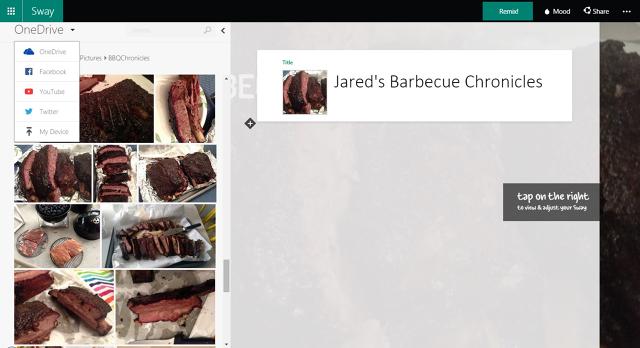
Google also stated that when you find yourself on a mobile tool, the nature of e-mail changes. “[We] get more electronic mail now than ever, essential knowledge is buried inside of messages, and our most important duties can slip throughout the cracks–especially once we’re working on our telephones,” senior vice chairman Sundar Pichai wrote in a weblog post. one among Inbox’s solutions to this problem is the flexibility to hit Snooze on an electronic mail until you arrive at a specific area, comparable to your place of work.
while Google Inbox and Microsoft Sway each supply web versions, fb went to the extreme with Paper and best constructed the app for iPhones. As engineering lead Scott Goodson explained in a March weblog post, this constraint ended in a completely new engineering method, as the corporate ditched widespread interface components like buttons and borders. “In setting out to create Paper, our goal was once to not decide apart past assumptions, but to start out easy,” Goodson wrote.
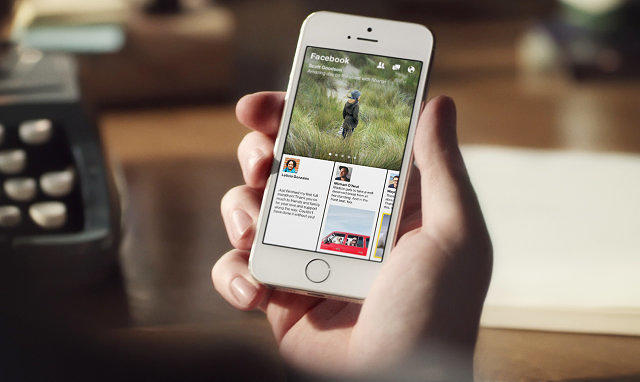
Enter The Algorithm
As these corporations get serious about addressing cellular person habits, a standard thread emerges: In trade for saving users time, they are eliminating some regulate and letting their algorithms do the work.
Pratley stated Microsoft has long dreamed of letting place of work customers automate certain duties, like defining a record’s colour palette or header appearance. but that wasn’t at all times technically imaginable, and folks became hooked up to specifying every ultimate element of their word documents and PowerPoint slides. Sway is a way of ranging from scratch. It makes use of algorithms to figure out what’s on the page, and adjusts its layouts for the best match. Over time, these algorithms will get better via finding out from person behavior.
“I had this attention some years ago, if it’s essential to simply trade folks’s concept of what they may be seeking to do to what they in reality say they want, which is instantly get one thing that appears good, what if we could deliver that for them?” Pratley stated. “Would they be willing to say, ‘i guess it doesn’t matter a lot that i will be able to’t position everything exactly in a undeniable situation?’”
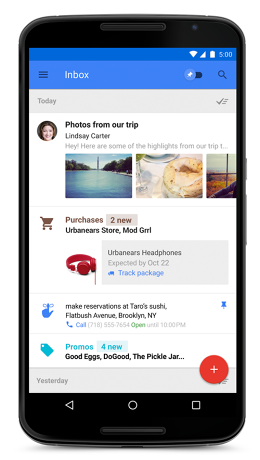
Google has tried bringing algorithmic automation to Gmail sooner than, with various levels of success. In 2010, the company presented precedence Inbox, which tried to deduce the most important emails and convey them to the highest. this selection remains to be round, however was effectively replaced by inbox tabs–itself a polarizing characteristic–in 2013.
Like Sway, Inbox is a reboot of those earlier ideas. It expands on the idea of tabs with new categories, and floats whole “bundles” of those classes to the highest of your Inbox when vital. And in every other algorithmic flourish, Inbox will convey relevant information alongside your reminders, corresponding to a number for the hardware store you are purported to call.
fb’s Paper, in the meantime, is a mix of algorithmic and human-curated stories, but with a key distinction from the main app: When having a look on the information Feed, there is not even an strategy to view issues in chronological order. And but, you don’t see people complaining about this, like they do with the principle app. In all instances, persons are extra accepting of algorithms and automation when the product is designed around them.
no longer enjoying round
of course, fb, Microsoft, and Google aren’t pitching their newest creations as total replacements for what came sooner than. however they’re now not treating these apps as experiments, either.
“We’re just getting began with Inbox, and this is something that we are investing in for the long run,” Garrick Toubassi, Gmail and Inbox’s engineering director, mentioned in a commentary. (the corporate declined to set up an interview.) “We spent two years in point of fact growing Inbox, and we have been excited to see the certain response thus far from users.”
facebook also declined an interview, but has proven identical dedication to Paper in earlier comments. “We’re truly targeted with Paper on taking part in out this imaginative and prescient and continuing to build it for the longer term,” Product manager Michael Reckhow informed Mashable earlier this yr. “As we start to construct it, i feel people will actually start to see what we’re doing.”
Microsoft’s Pratley used to be more up-front. The intention with Sway is to roll it into place of business and add a freemium industry variation (though he said the free model will turn into much more powerful than it is now). whereas it can be conceivable that some features of Sway could make their means into PowerPoint, he sees them coexisting as separate merchandise.
“i don’t think there may be going to be any dip sought after for the capabilities of PowerPoint,” Pratley stated. “however what we found was, if somebody stated ‘what I price extra is velocity, and having a look excellent with out effort, and maybe i’m keen to in return are living with somewhat bit much less customization capability,’ then Sway can work for them.”
![]()
(220)

